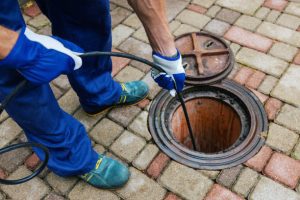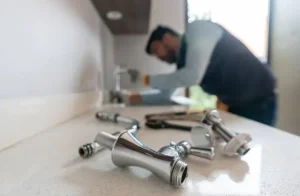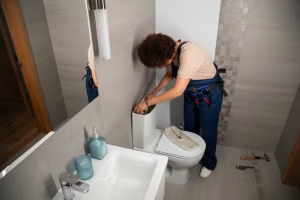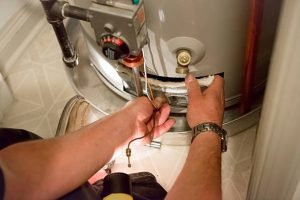Introduction: Internal Water Heater Leaks Are a Hidden Threat
When your water heater is leaking internally, the signs are not always noticeable. Unlike an external leak, where water floods under the unit, an internal leak happens inside the tank or between components. These leaks usually go undetected until they cause major issues.
However, there are a few warning signs that homeowners should know. If you catch these signs early, you can avoid water damage, expensive repairs, or sudden water heater failure. Unfortunately, most people only notice issues when the water turns cold or the pressure decreases.
This article will help you recognize the signs and know when to call a professional plumber. If you suspect your water heater is leaking internally, taking action early can save your system and wallet. Let’s break down the key symptoms and what each one could mean for your water heater.
Water Discoloration Could Mean Your Water Heater is Leaking Internally
One of the early signs of internal leaks in your water heater is discolored water. If your hot water looks rusty or brown, something must be wrong. This usually means that your tank is corroding inside. That corrosion releases particles into the water, resulting in discoloration. Corrosion inside the tank can create small holes that leak internally. Soon, these holes grow and cause the complete failure of the equipment.
This sign is often overlooked because homeowners blame their pipes instead. However, when only the hot water is affected, your heater most probably is the reason why.
It is best to contact a plumber if you notice consistent discoloration in your hot water supply. Rusty water is not just unpleasant, it is an early sign that your water heater is leaking internally and needs attention.
Low Water Pressure Can Indicate an Internal Leak
Another common sign that your water heater is leaking internally is a drop in water pressure. Pressure loss can happen for several reasons, and a common one is a leaking tank.
Water may escape through internall cracks, decreasing the overall flow from your fixtures. As a result, you might notice a weak stream when using hot water. This is especially noticeable during showers or while washing dishes with hot water.
Since pressure is controlled within the tank, any leak affects the entire system. ZDo not ignore this change, as it usually means water isn’t circulating properly due to a hidden issue. A plumber can check for internal leaks and confirm whether a replacement is necessary or not. If you suddenly experience low water pressure along with other signs, your water heater may be damaged and should be inspected as soon as possible.
Rumbling or Hissing Noises Often Signal Internal Water Heater Leaks
These odd noises are another indicator that your water heater is leaking internally. You may hear rumbling, hissing, or popping sounds during operation. These are usually caused by sediment buildup at the bottom of the tank. As sediment piles up, water becomes trapped underneath it. When the burner heats the water, steam pushes through the sediment, resulting in those sounds. Over time, the sediment buildup can crack the tank lining and lead to internal leaks. Additionally, hissing sounds may mean that water is escaping through tiny internal openings.
These noises might seem harmless, but they are signs of an impending issue. If ignored, the leak can worsen and flood your space. Therefore, you should pay attention when your tank is making unusual sounds.
It is always safer to have your unit evaluated by a plumber. Strange noises are a clear signal that your water heater is leaking internally or developing a serious issue.
Moisture Around the Unit May Still Mean It’s an Internal Leak
Even if there’s no visible stream of water, moisture around the base can mean your water heater is leaking internally. Some homeowners assume dampness near the heater is just condensation.
While that’s possible, consistent moisture is often a sign of trouble. Internal leaks can drip slowly and remain hidden inside the insulation. That moisture then seeps out over time and creates a damp area.
In some cases, the leak may not reach the floor until insulation is fully saturated. This is why checking for dampness regularly is important. Use a paper towel or cloth to test for wet spots around the unit. If it stays wet for several days, you likely have an internal leak. Even small amounts of moisture can lead to mold or rust. When your water heater is leaking internally, that dampness is your first clue.
Conclusion: Act Quickly If You Suspect an Internal Water Heater Leak
Knowing the signs that your water heater is leaking internally helps prevent serious damage. Discolored water, low pressure, unusual noises, and persistent moisture are all red flags. Though these signs might seem small, they point to larger internal issues. Ignoring them can result in costly repairs or even total tank failure.
However, with early detection, you can replace parts or upgrade the unit before major damage occurs.
Always consult a professional plumber if you notice more than one warning sign. They can run diagnostic tests and recommend the best course of action. Waiting too long only increases the risk of leaks spreading or flooding.
Protect your home by taking action early. If your water heater is leaking internally, don’t wait. Get it checked immediately for peace of mind and safety.
Interested in reading about Common Pitfalls During Old Pipe Repiping: Avoiding Walls and Flooring Damage?





